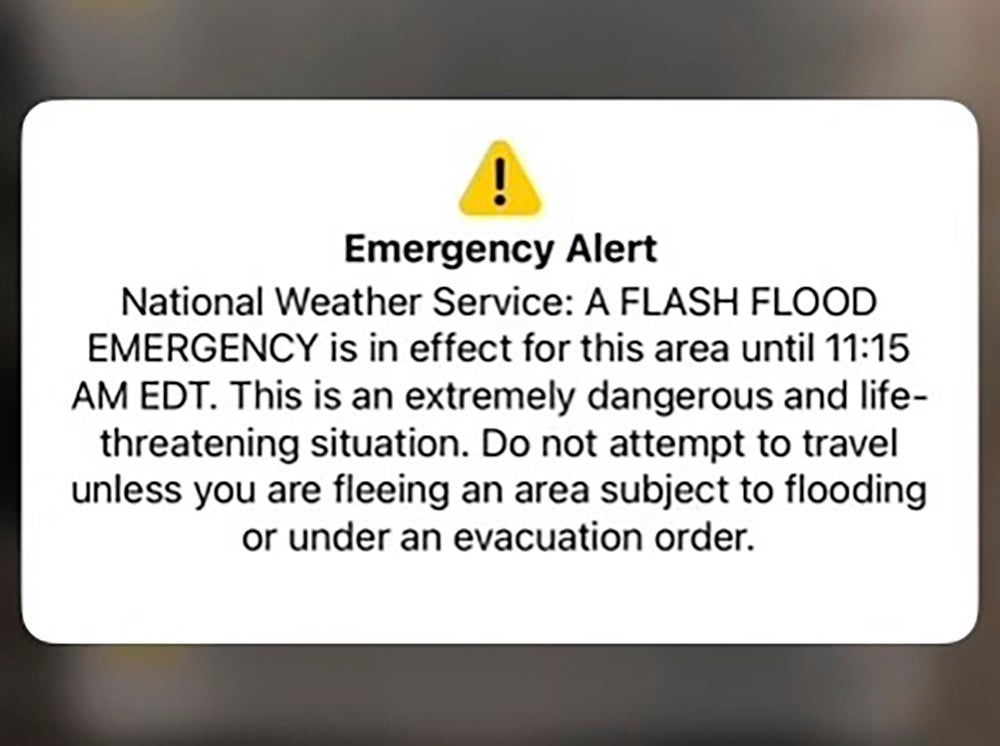Heavy rain in northern Vermont leads to washed out roads and rescues
Heavy rain has washed out some roads and led to about two dozen rescues in northern Vermont, nearly three weeks after many farmers and residents in the state were hit by flooding from the remnants of Hurricane Beryl

Your support helps us to tell the story
From reproductive rights to climate change to Big Tech, The Independent is on the ground when the story is developing. Whether it's investigating the financials of Elon Musk's pro-Trump PAC or producing our latest documentary, 'The A Word', which shines a light on the American women fighting for reproductive rights, we know how important it is to parse out the facts from the messaging.
At such a critical moment in US history, we need reporters on the ground. Your donation allows us to keep sending journalists to speak to both sides of the story.
The Independent is trusted by Americans across the entire political spectrum. And unlike many other quality news outlets, we choose not to lock Americans out of our reporting and analysis with paywalls. We believe quality journalism should be available to everyone, paid for by those who can afford it.
Your support makes all the difference.Heavy rain early Tuesday washed out roads and led to about two dozen rescues in northern Vermont, nearly three weeks after many farmers and residents in the state were hit by flooding from the remnants of Hurricane Beryl.
Some areas got 6 to 8 inches (15 to 20 centimeters) of rain starting late Monday and saw flash flooding, the National Weather Service in Burlington said. Flash flood warnings were in effect through Tuesday afternoon.
A team was heading out to survey the damage, which included “quite a bit” of structural and road damage, meteorologist Seth Kutikoff said.
“We do know, unfortunately, some of these same areas were hit three weeks ago with some serious flash flooding, as well,” he said. “The integrity of some structures were already weakened.”
In Lyndonville, a town about 40 miles (64 kilometers) north of Montpelier, the state capital, Deryck Colburn said he awoke before daybreak to a neighbor pounding on his door. They live along a brook.
“I went down the road to her house, and there was no road. There was just a river,” he said.
Colburn said he heard the same surge of rushing water he’d heard in flooding earlier in July, along with the unnerving sound of tumbling boulders carried by the water.
Most of the rain fell in that area and in St. Johnsbury, about 10 miles (16 kilometers) south. Police issued a “shelter in place” advisory Tuesday morning for St. Johnsbury, a town of about 6,000 people. At least 5 inches (12.7 centimeters) of rain fell farther north in area of Morgan, which is near the Canada border.
“We sent swift water rescue teams to the area overnight, and those teams conducted approximately two dozen rescues,” Mark Bosma, a spokesperson for the Vermont Emergency Management agency, said in an email.
Bosma said Lyndon, about a mile from Lyndonville, and St. Johnsbury sustained damage, but that the agency was waiting for more information to come in from those communities and others. Local news stations showed images of broken culverts and separated roads in St. Johnsbury.
There was no immediate word of injuries.
Colburn said some homes in Lyndonville that were damaged earlier in July were “washed away" during this storm. He said people were rescued. The emergency management agency did not have further information.
“The last storm was a wake-up call," he said. "I thought I would never see anything like that again. I don’t think that holds a candle to this. Not even close," he said.
“There’s a lot of broken hearts.”
More rain was possible Tuesday, the emergency agency said.
“Be ready for more heavy rain and potential flash flooding today. The areas impacted by last night’s storm are in the path of highest risk,” it posted online.
A section of Interstate 91 and sections of two major roads near St. Johnsbury were among the roads closed due to flooding, the state transportation agency posted.
“Respect all road detours and closures and never walk or drive through floodwaters,” Gov. Phil Scott posted online.
The state experienced major flooding earlier in July from the tail end of Hurricane Beryl. The flooding destroyed roads and bridges and inundated farms. It came exactly a year after a previous bout of severe flooding hit Vermont and several other states.
___
Sharp reported from Portland, Maine. McCormack reported from Concord, New Hampshire. Reporter Julie Walker in New York also contributed to this story.